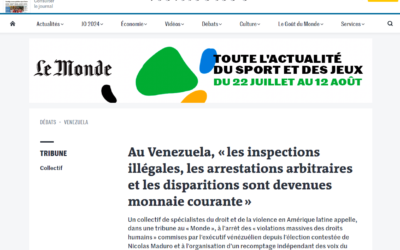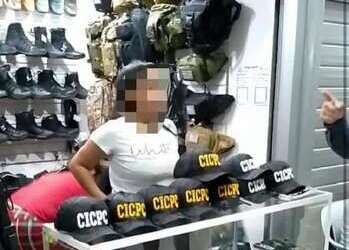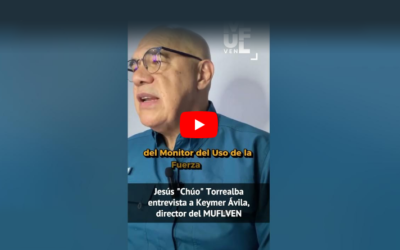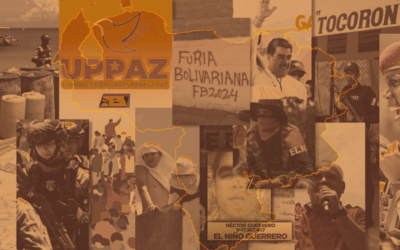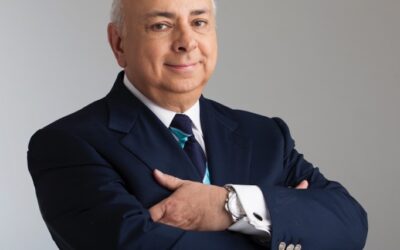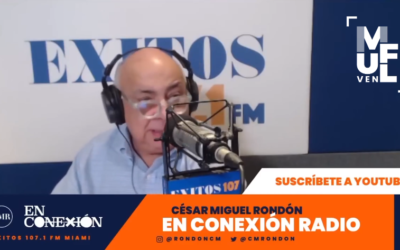Stacked up: Venezuelan president Nicolas Maduro has refused to allow humanitarian aid in © AFP
Opposition effort to deliver food and medicine likely to be met by a potentially deadly force
20 de febrero de 2019
Gideon Long
When opposition volunteers try to cross from Colombia to Venezuela this weekend in their attempt to deliver humanitarian aid, they are likely to find a disparate but large and potentially deadly force waiting to repel them.
Venezuela’s military has vowed to stop the aid at the border — part of President Nicolás Maduro’s attempt to thwart what he has said is a US-led plan to topple him and replace him with Juan Guaidó, the opposition leader and head of congress.
Mr Guaidó declared himself interim president last month, with the backing of the US and other nations. On Tuesday, Mr Maduro’s defence minister General Vladimir Padrino said anyone trying to take the presidency “will have to pass over our dead bodies”.
The forces Mr Padrino commands are relatively modest: 140,000 personnel, split between the army, navy, air force and the Bolivarian National Guard, the military police. Colombia, by comparison, has three times that number, is far better equipped and backed by the US.
But in Venezuela, the government can potentially draw on a vast civilian militia, a brutal police special force known by its Spanish acronym FAES, and hundreds of gangs known as colectivos, some of which are armed.
It is this potent mix that possibly lies in wait for volunteers who, according to Mr Guaidó and the US government, will take the aid across the Táchira river to Venezuela on Saturday.
In numerical terms, the Bolivarian militia is the biggest threat to the convoys. It consists of about 1.7m civilians — 6 per cent of the population — who claim they will take up arms to defend Venezuela and the 20-year-old socialist regime.
Some are old men; others are young people with no experience. But, nonetheless, the milicianos are ideologically motivated. “We have the preparation, the training and the organisation to go out and defend the fatherland, at any time and on any terrain,” First Lieutenant José Rafael Marrero said during a recent parade in Caracas. “We’re a complement to the armed forces,” he added as he inspected a raggle-taggle group of recruits, some in uniform, others in jeans and red T-shirts.
A deadlier if smaller threat to the aid volunteers are officers from the FAES and members of the colectivos. According to Gustavo Tarre Briceño, Mr Guaidó’s envoy to the Organisation of American States, both groups have moved up to the border.
Created by Mr Maduro in 2017, the FAES is a newcomer in the state security apparatus, but it already has a reputation for deadly force. People in poor neighbourhoods have reported black-clad, hooded FAES operatives raiding houses by night, abducting government opponents and killing people. Last week the US Treasury added the head of the unit to its list of sanctioned individuals, saying the force was “known for its brutal methods”.
“[FAES] training is not for containment but lethal attack. So the consequences can be fatal“
Keymer Ávila, Central University of Venezuela
Keymer Ávila, a professor of criminology at the Central University of Venezuela, said state forces killed almost 5,000 people in 2017, the most recent year for which figures are available. That is 14 a day. He described this as “a drop-by-drop massacre in which the FAES was a key player”.
More recently, the unit has led the crackdown during marches in support of Mr Guaidó. “Their training is not for containment but lethal attack,” Mr Ávila said. “So the consequences can be fatal.”
The colectivos are more difficult to define. Inspired by Cuba’s Committees for the Defense of the Revolution, they were supposed to promote social welfare — by cracking down on drug trafficking for example — while informing on government opponents. These days, some colectivos appear harmless enough, but others roam the streets on motorbikes terrorising residents. “They can be civilians, common criminals, vigilantes or paramilitary groups, or a mixture of all the above,” Mr Ávila said.
In poorer areas of Caracas, the colectivos mark their territory with graffiti. In the cramped, winding streets of the 23 de Enero neighbourhood, for example, the Tres Raices, Vanguardia Zamorano and Montaraz colectivos have all left their mark. “We’re peaceful but other colectivos are more radical and violent,” said William Pacheco of Montaraz. “We’re not armed but many of us are members of the militia and if it comes to it, we’ll defend our sovereign territory.”
For now, it is unclear how events will play out this weekend. Mr Guaidó and Donald Trump, US president, have urged the Venezuelan armed forces to let the aid through. Mr Trump has warned they risk “losing everything” if they resist. Mr Maduro has promised “another Vietnam” if the US uses force to try to unseat him.
In Washington, Mr Tarre Briceño has reiterated his view that the plan to carry food and medicine across the River Táchira will work. In a news conference last week, he said: “We don’t need a plan B because plan A is going to work.”
Publicado originalmente en: Financial Times
